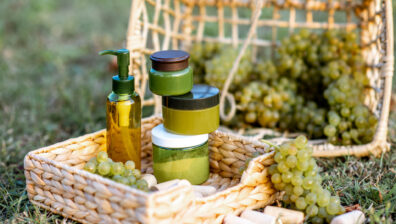
Grape
The Middle East is considered the cradle of the grape, beginning to be cultivated from 6,000 to 8,000 years ago, becoming one of the oldest in the history of human food.
In Brazil, the cultivation of the vine began in 1535, in the Captaincy of São Vicente, brought by the Portuguese. Italian immigration to São Paulo in southern Brazil, at the end of the 19th century, gave a great boost to culture.
The states of São Paulo, Paraná, Santa Catarina, Rio Grande do Sul, Pernambuco and Bahia are the major producers. But the most important center for the production of table grapes is found in the semiarid region of the Brazilian Northeast, in the São Francisco River Valley, between Pernambuco and Bahia.
It is estimated that the planted area of grapes in Brazil is 76 thousand hectares, and they produce 1.45 million tons. Approximately 500 thousand tons of fine table grapes are produced in the São Francisco River Valley. This volume supplies the domestic market and exports, which in 2020 totaled 49,226 thousand tons and revenues of US$ 106 million.
Basically produced by small and medium-sized fruit growers and a few large farms, the Brazilian production of fine table grapes, without seeds, for export is an activity of intensive capital, high production technology, high cost, but which produces exotic fruit. like the Vitória variety, very sweet, creating a fantastic experience for the consumer.
In addition to Vitória, there are more than 15 varieties distributed among reddish, black and white fruits, many of them produced and known internationally, however, with a touch of the tropicality of Brazil.

The grape production follows the most rigorous concepts of food safety and sustainability, and is certified by international companies in these aspects. The little rain in the region, in addition to improving quality, is a positive factor for plant health, significantly reducing the appearance of pests and diseases and reducing the need for chemical treatments.
There is an integrated pest control program to manage fruit flies, based on population surveys with traps, contributing to the local environment.
Furthermore, the production of grapes in the Brazilian semiarid region contributed to the region’s Human Development Index doubling in two decades, making it one of the best in terms of quality of life in the entire Northeast region. It employs thousands of workers, contributes to the socioeconomic inclusion of small farmers’ families and promotes regional development. There are numerous fantastic initiatives to protect the São Francisco River, including the adoption of irrigation systems that favor economy and good use of water.
Small in size, but extremely powerful when it comes to nutrition. Grapes have the following functional advantages:
- Rich in antioxidants: substances are responsible for ‘cleaning’ and protecting our cells from so-called free radicals, potentially dangerous compounds that can damage these structures.
- Resveratrol: a powerful antioxidant that is found in the rind of the fruit, the darker the greater the concentration of these compounds in the grape.
- Vitamins in abundance: you can find vitamin E, C, K and A. In addition, the fruit contains several minerals such as iron, calcium and potassium and a significant amount of fiber that can guarantee you a diet with a high nutritional content and free of cholesterol.
The consumption of table grapes produced in Brazil is pleasurable, safe and healthy, promotes well-being and quality of life and contributes to the country’s regional development, especially in the Brazilian Northeast.




